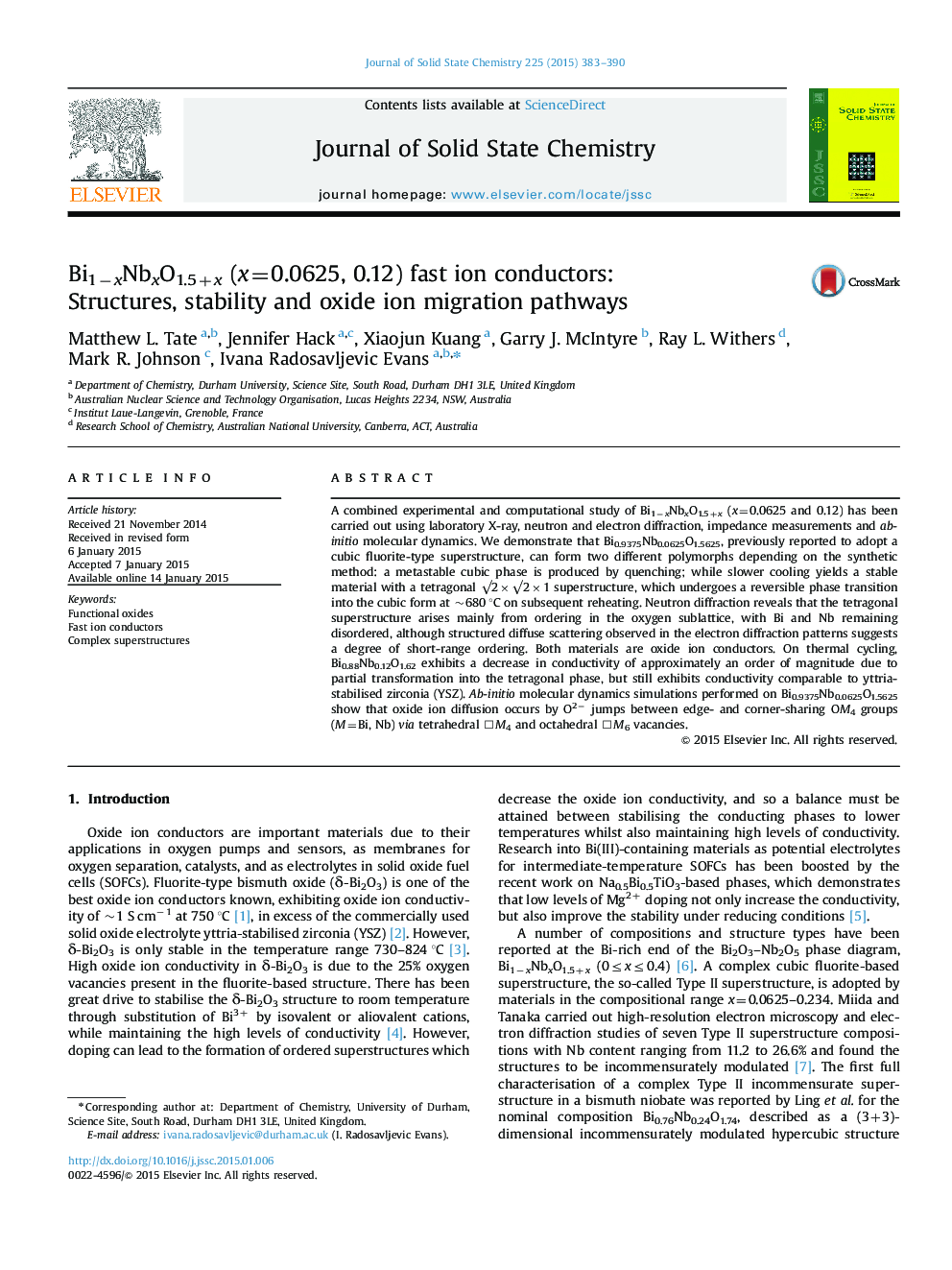| کد مقاله | کد نشریه | سال انتشار | مقاله انگلیسی | نسخه تمام متن |
|---|---|---|---|---|
| 1331645 | 1500091 | 2015 | 8 صفحه PDF | دانلود رایگان |

• Bi0.9375Nb0.0625O1.5625 adopts a tetragonal √2×√2×1 fluorite superstructure.
• Superstructure is due to ordering in the O-sublattice, with Bi/Nb disordered.
• Bi0.9375Nb0.0625O1.5625 is a good oxide ion conductor.
• O2− jump between OM4 groups (M=Bi, Nb) via tetrahedral and octahedral vacancies.
A combined experimental and computational study of Bi1−xNbxO1.5+x (x=0.0625 and 0.12) has been carried out using laboratory X-ray, neutron and electron diffraction, impedance measurements and ab-initio molecular dynamics. We demonstrate that Bi0.9375Nb0.0625O1.5625, previously reported to adopt a cubic fluorite-type superstructure, can form two different polymorphs depending on the synthetic method: a metastable cubic phase is produced by quenching; while slower cooling yields a stable material with a tetragonal √2×√2×1 superstructure, which undergoes a reversible phase transition into the cubic form at ~680 °C on subsequent reheating. Neutron diffraction reveals that the tetragonal superstructure arises mainly from ordering in the oxygen sublattice, with Bi and Nb remaining disordered, although structured diffuse scattering observed in the electron diffraction patterns suggests a degree of short-range ordering. Both materials are oxide ion conductors. On thermal cycling, Bi0.88Nb0.12O1.62 exhibits a decrease in conductivity of approximately an order of magnitude due to partial transformation into the tetragonal phase, but still exhibits conductivity comparable to yttria-stabilised zirconia (YSZ). Ab-initio molecular dynamics simulations performed on Bi0.9375Nb0.0625O1.5625 show that oxide ion diffusion occurs by O2− jumps between edge- and corner-sharing OM4 groups (M=Bi, Nb) via tetrahedral □M4 and octahedral □M6 vacancies.
Oxide ion migration in tetragonal Bi0.9375Nb0.0625O1.5625 occurs by O2− jumps between edge- and corner-sharing OM4 groups (M=Bi, Nb) via tetrahedral M4 and octahedral M6 vacancies. Figure optionsDownload as PowerPoint slide
Journal: Journal of Solid State Chemistry - Volume 225, May 2015, Pages 383–390